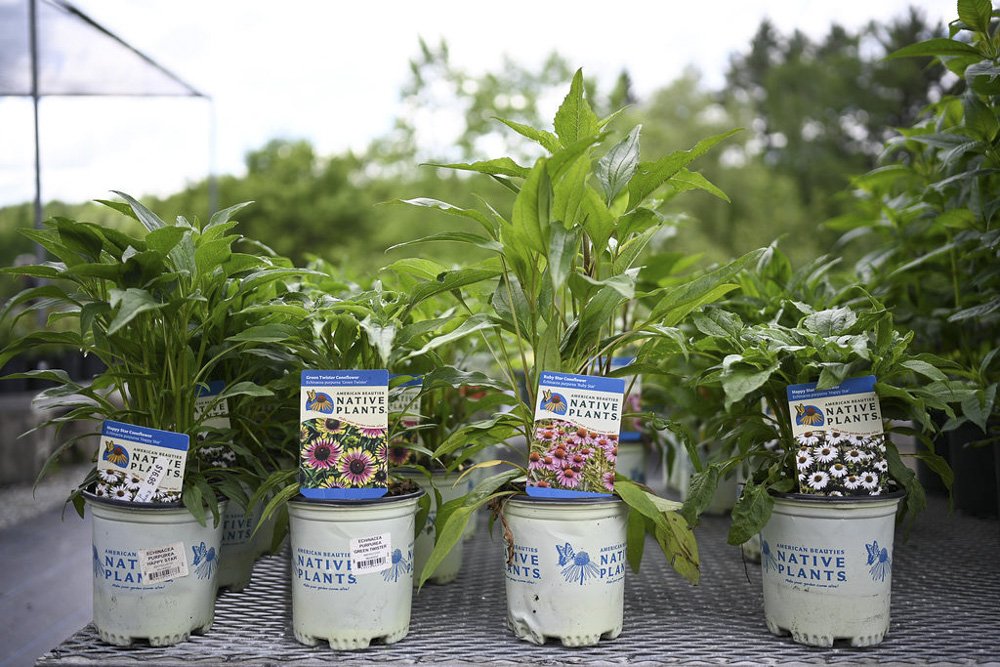Native Perennials
While many plants - perennials and annuals alike - are great for enhancing a garden as well as supporting pollinators, there is nothing quite as beneficial to a landscape and ecosystem as a native.
When a perennial, tree, or shrub is described as being “native”, that means it is a plant that is found naturally growing in our area. These plants have adapted perfectly to our temperatures, soil composition and weather patterns and will thrive nearly anywhere they are planted. This also means that they are a reliable and preferred source of food for our native pollinators and growing them can help support bee, butterfly and bird populations in our area.
'
Why plant natives?
While gardening has historically been focused on one of two things - aesthetics and food production - there has emerged a greater understanding in the modern world for the lasting benefits of incorporating native plants into your landscape. What ancient cultures once understood intuitively, we are beginning to re-learn through the lens of scientific discovery. Native plants are not just selected for their beauty or fragrance but for their importance to the ecosystem that surrounds them. Gardens filled with specimen trees and ornamental flowers offer very little in the way of nutrition to our native pollinators and often put us at a higher risk for experiencing the arrival of invasives.
Even just incorporating a native plant here or there in your yard or established garden can have a major impact on the amount of native butterflies, bees and birds that will visit your home.
Straight species vs cultivars
When shopping at our garden center, you may notice many of our plants marked as natives go by different names or have different habits and colors. These plants are called cultivars, meaning that they have been selected and cultivated for a naturally occurring genetic mutation or - much more often - have never been found in the wild and have been bred by humans from a straight species in order to achieve certain characteristics. While the acronym “GMO” gets thrown around quite a bit with a negative connotation, often times plants are bred not only for desirable sizes or colors, but for resistance to disease or pests which in turn can help reduce the amount of chemicals needed to keep a plant healthy.
Research does support that while some cultivars are sterile or simply less attractive to native pollinators, some perform on an equal beneficial scale and some mutations are even more appealing to local pollinator populations, with equal benefits to the landscape.
Choosing the right native
Choosing the right native to incorporate into your garden seems like it would be easy - just pick what you like, right? While this is sometimes true, always keep in mind that while some natives have very polite, compact habits, many of them are so well adapted to our climate and soil that they tend to spread vigorously. Not a problem if you have a meadow, but in a smaller, formal garden you wouldn’t necessarily want to plant milkweed! Native plants also do best in a wide variety of conditions: some prefer sun, some shade, some are suited to rocky, alpine soil and some to swampy forests. Vermont is a versatile place and so are the plants that do best here!
A plant’s picture tag is always a great resource. The tag will tell you plainly how wide and tall you can expect the plant to get and whether it does best in sun, part sun or shade. Some will even mention optimal soil conditions! These tags, however, can be pretty general. After all, they are giving average sizing for not just zone 4, but for the other end of the spectrum as well. If a plant grows in zones 4-8, they will not get to the same size or have the same sunlight needs in each zone where they are hardy. This is where our staff comes in! If we don’t have the plant growing in our own gardens, we certainly know someone who does!
And don’t forget to join us for Pollinator Day, taking place this year on Saturday, May 31st! It’s a day of information and fun, dedicated to the pollinators we love and the plants that help them survive!




